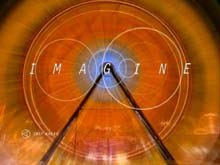A panel of experts discuss how the introduction of new technology into the advertising world has changed the business of making commercials.
The introduction of new technology into the commercial world has revolutionized the process and in turn the advertisements that we see each and every day. For an insiders view on the changes, I asked Glenn Chalek of LoConte Goldman Design, TOPIX | Mad Dog's Sylvain Taillon, The Attik's James Sommerville and David Starr of Curious Pictures, how the integration of new technologies has altered the way they do their creative business. Glenn Chalek, Executive Producer, LoConte Goldman Design Boston, Massachusetts, USA

New technologies have had a dramatic and creatively liberating impact on the advertising community. Creatives in the advertising world were previously harnessed and restrained by the limitations of not only what was technically available, but also the affordability and geographic access to what was technically achievable. As new technologies evolved, and became more powerful, versatile, and readily available in both large and smaller markets, agency creatives were truly able to think outside of the box in a more sophisticated manner. Altering or reproducing reality was easily achieved. Creating an entirely fictitious but realistic world was similarly achievable. Physical travel has become less critical, and visual communication more fluid and instantaneous. As technology improved in parallel with the volume of advertising communications, the conceptual and creative parameters have also widened exponentially.

Another key benefit to the advertising community has been the introduction of a huge pool of designers and editors who had worked primarily in the broadcast industry. This group of companies and individuals, whose world revolved around broadcast design, are now stylistically appropriate and technically capable for advertising communications. Currently, it is quite fashionable for a designer to design/direct a television commercial, corporate video or create a web site. The lines have been blurred in the marketplace, and what had been segmented production industries, have now converged in the general world of visual communication. Because this group had been accustomed to state of the art equipment in creating their imagery, they now provide a well-seasoned and experienced resource for visually sophisticated or effects-laden advertising tools.
Sylvain Taillon, Partner and Executive Producer, TOPIX | Mad Dog
Toronto, Ontario, Canada

The introduction of new digital technology (flame, inferno, henry, etc.), special effects and computer generated imagery has changed the advertising field on two levels. For one thing, the new technologies are providing an unprecedented amount of control over the material that finally makes it to air: we are, after all, more often than not in the business of creating an ideal vision of the world. We can make reality better than the best incarnation of the real thing. We can make it glitter, erase its flaws, steal the perfect cloud formation from Take 1 and paste it in the back of Take 62, the one with the perfect delivery.
And that is just for starters: while we now have so much control over the images we create, our technologies and talents have freed up the minds of the creative types. If they can imagine it, we can, most probably, do it. Which is great in most cases, but we can also give birth to monsters, ideas that would have been better left alone in a now-gone world of impossibility. As George Mallory said in 1924, when asked why anyone would attempt to climb Everest: "Because it is there." The same goes for some special effects extravaganzas: why in the world did we do it? Because we can.

James Sommerville, Group Creative Director, The Attik
New York, New York, USA







